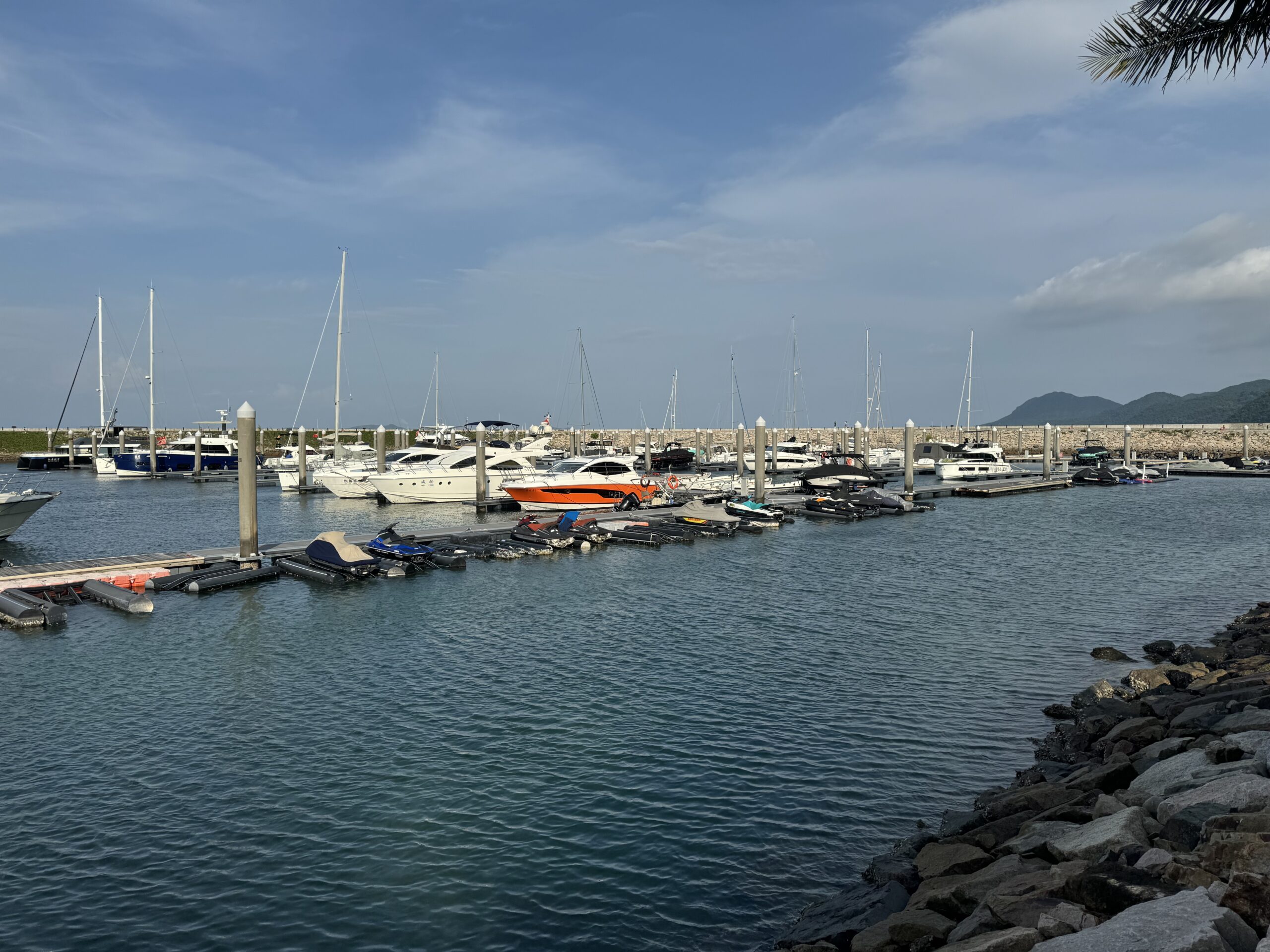As an international nautical centre, Hong Kong’s yacht berthing facilities are designed to meet the needs of the marine environment and the city, covering a variety of berthing modes. This article will introduce in detail the characteristics and differences of water level, bridge position and hoisting in Hong Kong yacht berths to help readers understand their functions and applications.
water level
The water level is also called a wet berth, and the boat needs to be moored on the water surface to ensure that the water depth is sufficient to avoid bottoming out at low tide. The Royal Hong Kong Yacht Club (RHKYC) usually maintains a water depth of 3-5 metres at the wet berths on Austin Island and typhoon shelters, which are suitable for medium to large yachts.
At the same time, most of the water level needs to be boarded by typhoon shelter management to reach the location of the moored ship, and a certain management fee needs to be paid, which is slightly less convenient but more cost-effective. During the typhoon season (June to October), when the water level rises and the wind and waves increase, the boat simply moves to a typhoon shelter or reinforces its moorings. RHKYC advises members to check moorings in advance, such as retrofitting crash pads and additional ropes.

Bridge position
Yacht bridges are usually pontoons or passageways connecting berths to the shore to facilitate the disembarkation of crew and passengers. In Hong Kong, bridges are mostly found in the wet berth area of yacht clubs: pontoons are supported by pontoons that float with the water level and remain at the same height as the deck of the boat.
The bridge provides safe and easy access to the shore and is ideal for families or crews carrying gear. Some of the bridges are equipped with lighting and non-slip surfaces to enhance safety at night.

Shore position
Shore position, also known as hardstanding or dry berthing, refers to the lifting of a yacht from the surface to the land for maintenance or long-term storage: the boat is lifted by a crane (such as RHKYC’s 25-tonne crane) and placed on a hard support. This service is available on Austin Island and Typhoon Shelter and is suitable for boats up to 20 metres in length.
Advantages: Avoid long-term immersion of the hull in seawater, reduce corrosion and biological attachment, suitable for seasonal shutdown or overhaul. The cost is about $2,000-$3,000 per month (depending on size), which is lower than a wet berth. However, it is not suitable for frequently used vessels, because hoisting requires reservations and is time-consuming. Hard space is limited and needs to be requested in advance. It is more common in small sailboats or racing boats, such as RHKYC members, and is often used for post-race storage.

conclusion
Yacht berths in Hong Kong have their own characteristics depending on the water level, bridge position and hoisting needs. The water level affects the convenience of the wet berth, the bridge improves the convenience, and the hoisting ashore is suitable for maintenance and storage. Prices vary by location and size, with Austin Island being the most expensive and Central being the most economical, allowing owners to choose the right option for their needs.

For more information on berth rentals and transfers, please click here: https://boatmarket.com.hk/mooring/
For more information, yacht sales, berths and maintenance, please contact:
Whatsapp Contact: https://wa.link/9ut5br
WhatsApp:+85244249752
Voy/Boatmarket Official Phone: 59048455
📧 Email – enquiry@boatmarket.com.hk

